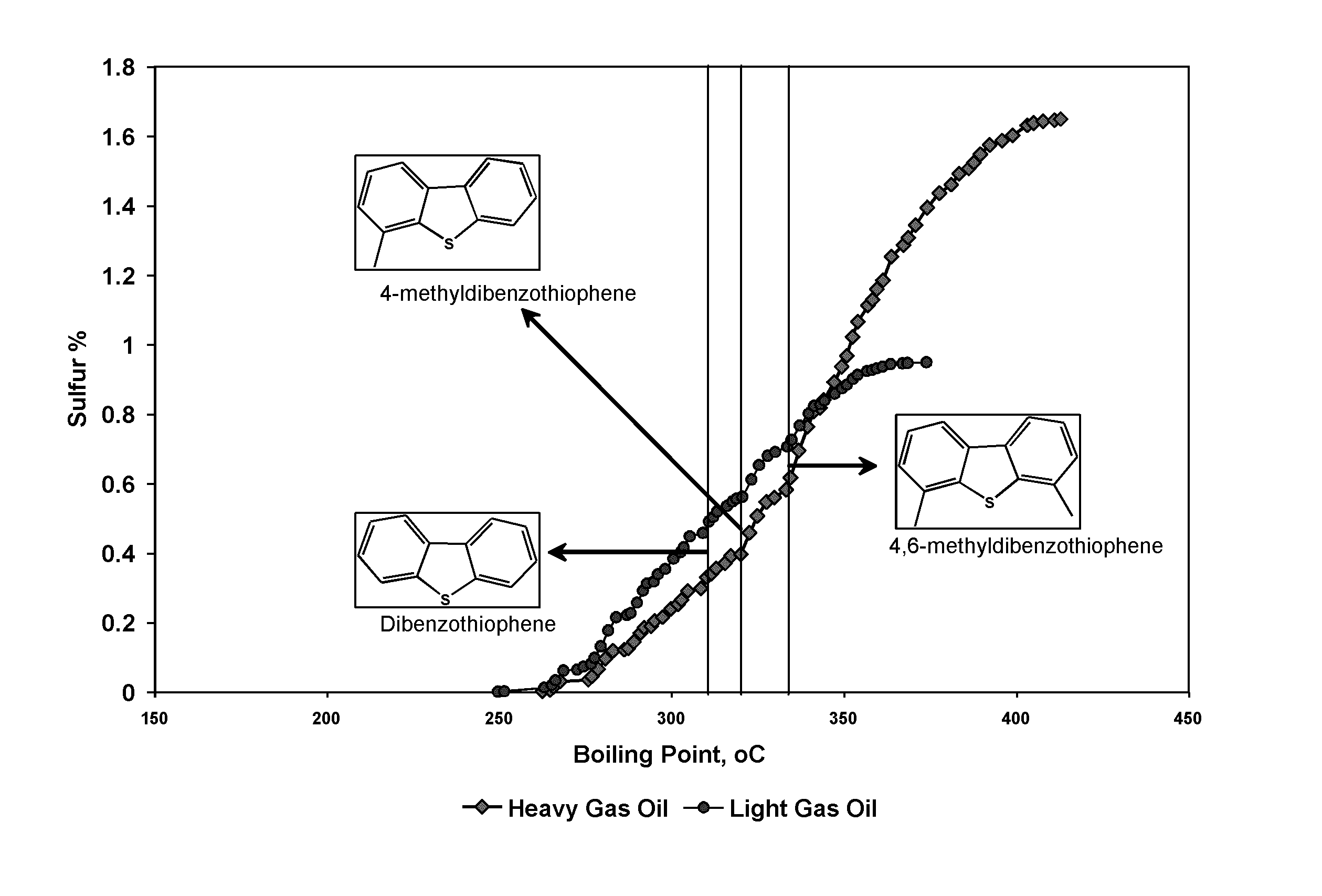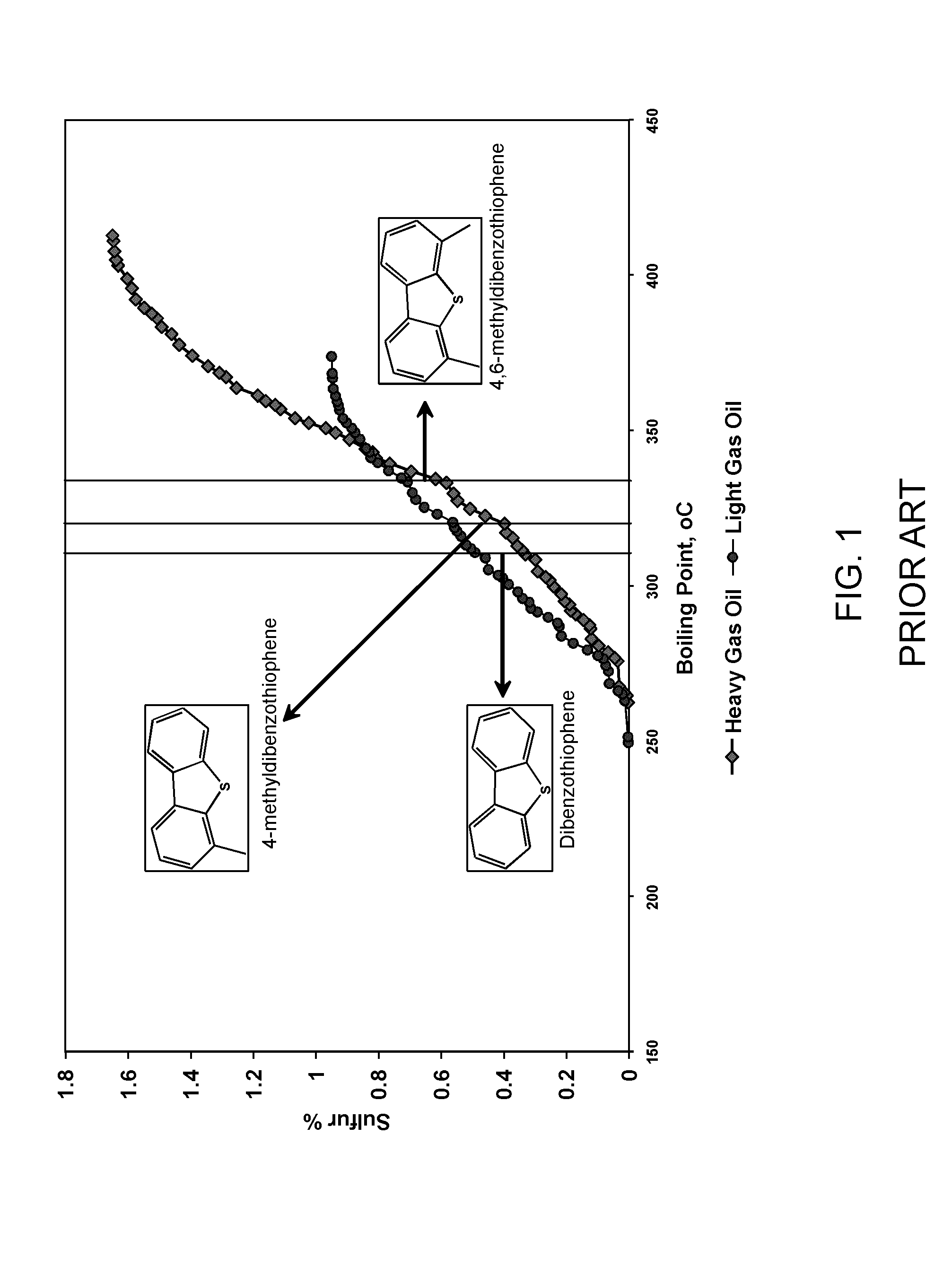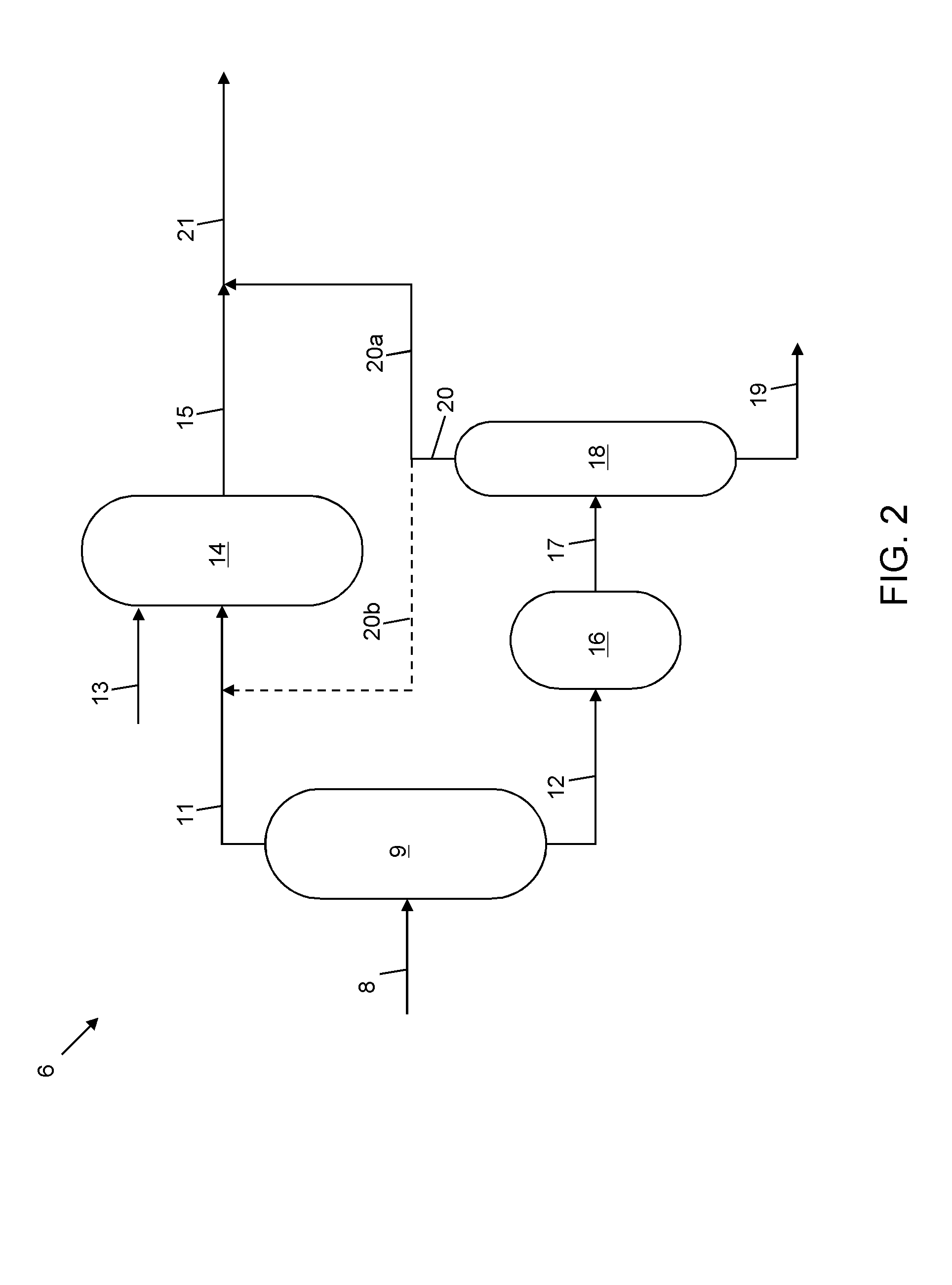Targeted desulfurization process and apparatus integrating gas phase oxidative desulfurization and hydrodesulfurization to produce diesel fuel having an ultra-low level of organosulfur compounds
a technology of gas phase oxidative desulfurization and hydrodesulfurization, which is applied in the direction of catalyst activation/preparation, metal/metal-oxide/metal-hydroxide catalyst, physical/chemical process catalyst, etc., can solve the problems of conventional methods that do not fractionate hydrocarbons, and achieve the optimization of the use of integrated apparatus and processes, the effect of optimizing the utilization of the different types of desulfurization processes and minimizing the cost of hydrotr
- Summary
- Abstract
- Description
- Claims
- Application Information
AI Technical Summary
Benefits of technology
Problems solved by technology
Method used
Image
Examples
example 1
[0074]A gas oil was fractionated in an atmospheric distillation column to split the gas oil into two fractions: a light gas oil fraction (LGO) that boils at 340° C. and less with 92.6 W % yield and a heavy gas oil fraction (HGO) that boils at 340° C. and higher with 7.4 W % yield were obtained. The LGO boiling 340° C. or less, the properties of which are given in Table 4, was subjected to hydrodesulfurization in a hydrotreating vessel using an alumina catalyst promoted with cobalt and molybdenum metals at 30 Kg / cm2 hydrogen partial pressure at the reactor outlet, weighted average bed temperature of 335° C., liquid hourly space velocity of 1.0 h−1 and a hydrogen feed rate of 300 L / L. The sulfur content of the gas oil was reduced to 10 ppmw from 6,250 ppmw.
[0075]
TABLE 4Properties of Gas Oil, LGO and HGOUnitGas OilLGOHGOYieldW %10092.67.4SulfurW %0.720.6251.9Densityg / cc0.820.8140.885ASTM D86Distillation 5%° C.13815033210%° C.16617333830%° C.21821734750%° C.25324435570%° C.28227236390%°...
examples 2-13
[0078]Examples 2-13 are provided which describe methods to make the gaseous oxidative desulfurization catalyst material (2-12) and tests using those catalysts (13).
example 2
[0079]37.5 g of Cu(NO3)2 (0.2 moles), 13.3 g of Zn(NO3)2 (0.07 moles) and 50.1 g of Al(NO3)3 (0.235 moles) were dissolved in 500 ml of distilled water, to form what shall be referred to as “solution A” hereafter. The pH of the solution was 2.3.
[0080]Similarly, 19.08 g of Na2CO3 (0.18 moles) and 36 g of NaOH (0.9 moles) were dissolved in 600 ml of distilled water, to produce “solution B,” which had a pH of 13.7.
[0081]Solution A was heated to 65° C. and solution B was added to solution A at a rate of about 5 ml / minute with constant agitation, until all of solution B was added. The resulting mixture had a pH of 11.0. A precipitate formed which was aged for 6 hours at 65° C. The solution was cooled to room temperature and filtered with a Buchner funnel. Precipitate was washed with distilled water. Analysis of the precipitate showed that nearly all (about 99%) of the Cu, Zn and Al precipitated out of the solution.
[0082]The precipitate was then dried at 110° C. for 12 hours. The dried mat...
PUM
| Property | Measurement | Unit |
|---|---|---|
| temperature cut point | aaaaa | aaaaa |
| hydrogen partial pressure | aaaaa | aaaaa |
| hydrogen partial pressure | aaaaa | aaaaa |
Abstract
Description
Claims
Application Information
 Login to View More
Login to View More - R&D
- Intellectual Property
- Life Sciences
- Materials
- Tech Scout
- Unparalleled Data Quality
- Higher Quality Content
- 60% Fewer Hallucinations
Browse by: Latest US Patents, China's latest patents, Technical Efficacy Thesaurus, Application Domain, Technology Topic, Popular Technical Reports.
© 2025 PatSnap. All rights reserved.Legal|Privacy policy|Modern Slavery Act Transparency Statement|Sitemap|About US| Contact US: help@patsnap.com



